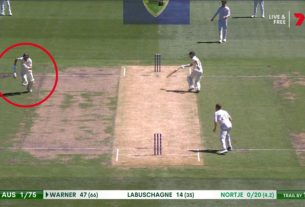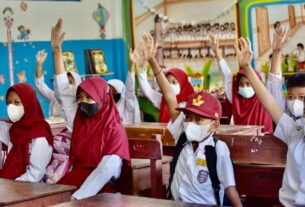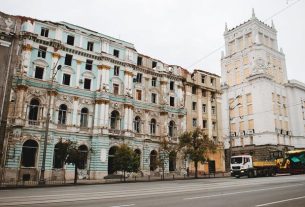Pelé— who died of colon cancer and a respiratory infection on December 29, 2022, aged 82—was inextricably interwoven with Africa. His boundless love for the continent could be glimpsed in various acts of solidarity, some of which seemed to fly in the face of common sense.
Three years after Yugoslavia tanked Zaire 9-0 at the 1974 Fifa World Cup, the celebrated Brazilian footballer made a prediction that—it can be argued—hinted at the true index of his heart.
“An African nation,” he confidently started, “will win the World Cup before the year 2000.”
Morocco came menacingly close to doing so a little over two decades later. By that time it had long been revealed that the larger-than-life character, born Edson Arantes do Nascimento on October 23, 1940, was receiving end-of-life care in his native Brazil.
Hardly the type that went in on a pair of eights and came out with aces full during his heyday, Pelé in fact visited Morocco multiple times. It probably wasn’t lost on him that the country was the birthplace of the foremost “Black Pearl”—Ben Barek.
That nickname—along with “the King”—would go on to be extensively used whilst Pelé displayed his graceful skills on the pitch with a rockstar prestige. Yet he was still magnanimous enough to declare during one of his visits to Morocco that “if I am the king of football, Ben Barek is its god.”
Not even the spectre of war or the unseemly possibility of being caught between multiple spasms of extreme violence stopped him from making stopovers in Nigeria and the two Congos—all of them strife-torn—a year before the 1970 Fifa World Cup.
Pelé would of course go to display imaginativeness beyond his peers as that memorable Seleção outfit laden with technicians like Carlos Alberto, Jairzinho, Gérson, Tostão and Rivelino delivered a masterclass in Mexico.
After winning his third and last World Cup title in 1970, following earlier exploits in 1958 and 1962, Pelé played in various gala matches in Mali (1971) and Ghana (1977) to mention but two. In February of 2019, the Brazilian legend tweeted about a Senegalese goalkeeper who “cried so much after I scored that he had to be substituted!”

In this file photo taken on February 08, 2012 former player Brazil’s Pele acknowledges the crowd before the African Cup of Nations (CAN 2012) semi-final football match Mali vs Ivory Coast at the Stade de l’Amitie in Libreville. PHOTO/AFP
By the time Pelé visited Uganda in 1976 courtesy of Pepsi, he had long swapped his boyhood club Santos for New York Cosmos. He still presented Idi Amin with a Santos jersey and could be heard telling Uganda’s third president what the initials SFC stood for—Santos Football Club.
“At Entebbe, Pele was received by [National Council of Sports] NCS boss Ernest Oluo, NCS general secretary Martin Okoth and [Fufa boss Era Mugisa. The following day, Fufa organised a football gala comprising of school teams from King’s College Budo, Kololo SS, Lubaga Boys and Old Kampala SS as well as a select team from the central region youth sides,” veteran sports journalist, Hassan Badru Zziwa wrote in The Observer, adding that Pelé “showcase[d] his extraordinary skills at half-time” during the second match staged during the Brazilian’s visit between top flight clubs Coffee and Uganda Prisons (Maroons).
While Pelé autographed a giant-sized portrait of his from the 1970 World Cup while at Nakivubo Stadium, its whereabouts—or, more accurately, fate—are unclear. If Fufa didn’t handle such memorabilia gingerly, other beneficiaries appear to have done a much better job cognisant of the fact that rare items can have enormous value.
It’s quite possible that Pelé who rose from barefoot poverty to become the very embodiment of an icon hoped—even wished—the same for Africa. A rags-to-riches outcome. But much like Fufa did with the portrait he autographed in 1976, the bountiful talent on the continent keeps withering away. This—to a certain degree—will sully the squeaky clean image of a king who hedged his bets on a rough diamond.




